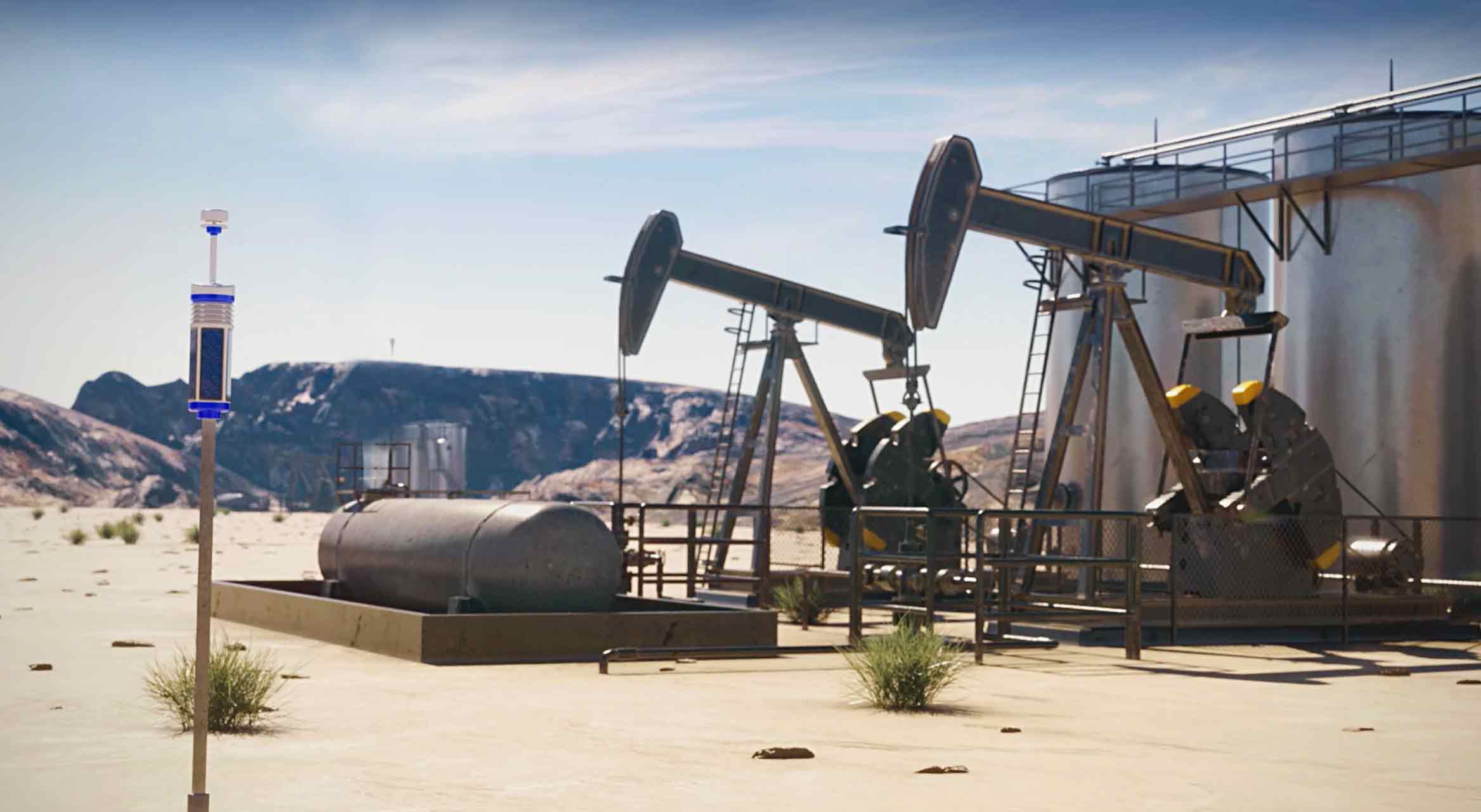Catch every leak with continuous methane detection.
Energy explained: What is methane, and why do methane emissions need to be addressed?
Published: 03/18/2024

Energy explained: What is methane, and why do methane emissions need to be addressed?
Published: 03/18/2024

What is methane?
Methane is a colorless, odorless and flammable gas that occurs naturally underground and in the environment.
It is the main component of natural gas—an important transition fuel for our planet that burns cleaner than coal or oil. Every year, millions of people rely on natural gas for electricity generation, heating, cooking and more.
What’s the problem?
When methane is released into the atmosphere, it causes a significant near-term warming impact—up to 80 times that of CO2 over a 20-year timescale.
In our industry, fugitive emissions (e.g., methane leaks), venting and incomplete combustion in flares and stationary combustion devices are the primary sources of released methane.

What’s the impact?
Historical methane emissions are responsible for 0.5 degrees Celsius of the 1.2 degrees Celsius that our planet has already warmed, and the oil and gas industry is one of the largest sources of methane emissions. Today, about a fifth of the world's anthropogenic (man-made) methane emissions come from the oil and gas industry and about half of the industry's operational emissions come from methane.
Taking action
Just over two years ago, we launched our End-to-end Emissions Solutions (SEES) business to address methane and routine flare emissions from oil and gas industry operations through consultative and technology-driven solutions.
“As the world transitions to a lower-carbon economy and social consciousness on climate-related issues puts growing pressure on the oil and gas industry to act, addressing methane emissions and routine flaring is our first and best chance to show that our industry is seriously committed to slowing climate change,” said Kahina Abdeli-Galinier, director of SLB’s emissions business.
What’s the fix?
The good news with methane is that it’s a fixable problem.
According to the International Energy Administration (IEA), about 70% of the methane emissions from fossil fuel operations could be reduced using existing technologies. It’s also relatively inexpensive to address methane.
Drew Pomerantz, the technology director of SLB’s emissions business, says despite these factors, there are still bottlenecks for widespread industry adoption. He explains that while many of the remediation technologies to address methane are easy to apply, the larger challenge is detecting and measuring the sources, so operators know what they need to fix and where to fix it.
“Part of the problem for operators is their ability to easily scale their methane monitoring programs,” he said. “Through continuous innovation of the technology, we’re beginning to chip away at some of these barriers.”
In October last year, SEES launched its methane point instrument, a self-installed continuous methane monitoring system that uses IoT-enabled sensors to quickly and cost effectively detect, locate and quantify emissions across oil and gas operations.

The technology is a fraction of the size of a conventional point instrument, so it can be installed by an operator in minutes, mounted on existing infrastructure and deployed at virtually zero cost—much like a self-installed home security camera.
“Continuous monitoring is considered the most effective way to detect methane leaks because it detects emissions as soon as they occur,” said Pomerantz. “Our methane point instrument will enable operators to more economically scale up and quickly roll out continuous methane monitoring across their facilities.”
Gaining traction
Since the launch of SEES, the business has completed more than 20 projects worldwide, providing commercial technology solutions and consultative services for continuous methane monitoring, and gas-to-value services, which focus on monetizing the value of captured methane gas.
SEES currently has more than 15 customers that are deploying its continuous methane monitoring technologies and it is working on a global methane measurement and reporting project for Eni that aligns with the reporting standards of the Oil and Gas Methane Partnership 2.0 (OGMP 2.0), the flagship methane reporting and mitigation program of the United Nations Environment Programme (UNEP).
“The industry is starting to look at methane much like it did safety many decades ago,” said Abdeli-Galinier. “Today, our industry is safer than ever before thanks to the actions taken by industry decision makers and countless men and women who have committed themselves to creating and sustaining a culture of safety in oil and gas. We must apply this same level of effort to addressing methane; it is that important to preserving our industry’s future, meeting global energy requirements and protecting the livability of our planet.”
Want to learn more about methane and other important topics for our industry? Check out our Insights.
